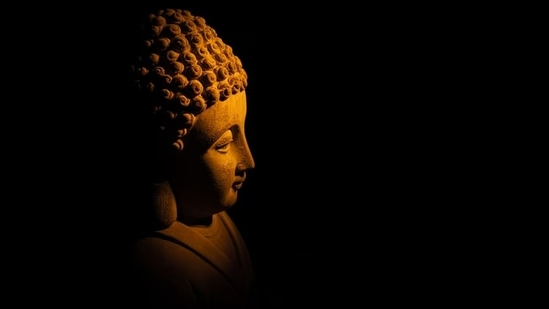
Table of Contents
- Introduction: A Global Day of Enlightenment
- The Essence of Buddha Purnima
- India: The Sacred Land of Origins
- Nepal: The Birthplace of the Buddha
- Sri Lanka: Illuminated Devotion and Ancient Rituals
- Thailand: A Nation in Meditative Reverence
- Myanmar: Chanting, Lanterns, and Acts of Merit
- Japan: Hanamatsuri and the Celebration of Compassion
- Tibet: Prayer Flags, Mantras, and Monastic Ceremonies
- Bhutan: Spiritual Festivity in Himalayan Serenity
- Indonesia: Vesak at Borobudur – A Celestial Experience
- China and Vietnam: Blending Tradition with Modern Faith
- Conclusion: A Unified Message in Diverse Traditions
1. Introduction: A Global Day of Enlightenment
Buddha Purnima is not bound by geography—it’s a shared celebration of wisdom, peace, and spiritual awakening. Though rooted in the East, this sacred day has transcended borders, blossoming uniquely in each country that reveres the life and teachings of Gautama Buddha. While the essence remains the same, the rituals, symbols, and celebrations vary in vibrant, culturally rich ways.
2. The Essence of Buddha Purnima
At its core, Buddha Purnima commemorates three key milestones in the life of the Buddha—his birth in Lumbini, his enlightenment under the Bodhi Tree, and his parinirvana in Kushinagar. Celebrated on the full moon of the lunar month of Vaisakha, it is a sacred day of reflection, reverence, and renewal across Buddhist traditions worldwide.
3. India: The Sacred Land of Origins
In India, the birthplace of Buddhism, Buddha Purnima is observed with solemnity and reverence, especially in:
- Bodh Gaya: Pilgrims from around the world gather at the Mahabodhi Temple to meditate, chant, and walk the path the Buddha once walked.
- Sarnath and Kushinagar: Special sermons, processions, and scripture recitations bring Buddha’s teachings to life.
- Rituals include offering alms, lighting butter lamps, and releasing birds to symbolize freedom from suffering.
4. Nepal: The Birthplace of the Buddha
In Nepal, Buddha Purnima is called Buddha Jayanti and is celebrated with deep national pride:
- Lumbini, the sacred birthplace, becomes a vibrant center of pilgrimage and peace.
- Devotees perform “panchasheela” rituals and carry out ‘dana’ (charity) as acts of merit.
- Temples are adorned with prayer flags and flowers while monks recite sacred texts from dawn till dusk.
5. Sri Lanka: Illuminated Devotion and Ancient Rituals
Sri Lanka observes Buddha Purnima, or Vesak, as a national holiday marked by:
- Dana stalls offering free food and drinks to passersby as a symbol of compassion.
- Vesak lanterns (Vesak kuudu) light up the night sky, representing the light of wisdom.
- Street plays and pandals depict stories from the Jataka tales, bringing Buddha’s teachings to the public.
6. Thailand: A Nation in Meditative Reverence
In Thailand, Vesak is a day of deep spiritual discipline and public observance:
- Devotees visit temples early morning to offer food to monks and engage in meditation and chanting.
- Temples conduct candlelit processions known as Wian Tian, where devotees circle the temple three times.
- The day is also used for releasing animals and practicing kindness in thought, word, and deed.
7. Myanmar: Chanting, Lanterns, and Acts of Merit
In Myanmar, Buddha Purnima blends religious solemnity with vibrant ritual:
- Special focus is placed on watering the Bodhi tree, believed to bring spiritual blessings.
- Monks are offered robes, medicine, and donations.
- People release caged animals and light oil lamps, symbolizing the dispelling of ignorance.
8. Japan: Hanamatsuri and the Celebration of Compassion
Though celebrated on a different date (April 8), Japan’s Hanamatsuri honors Buddha’s birth:
- Temples host the “flower festival”, where a statue of infant Buddha is bathed in sweet tea (amacha).
- Children dress in traditional attire, participate in colorful parades, and offer flowers to shrines.
- While less formal than in Theravāda countries, the rituals carry rich symbolic meaning.
9. Tibet: Prayer Flags, Mantras, and Monastic Ceremonies
In Tibetan Buddhism, Buddha Purnima is a time for intensive spiritual practice:
- Monks engage in day-long chanting, reciting the Tripitaka and conducting pujas (prayers).
- Devotees spin prayer wheels, hang new prayer flags, and engage in pilgrimages around sacred sites.
- Acts of generosity, fasting, and reflection are seen as ways to accumulate spiritual merit.
10. Bhutan: Spiritual Festivity in Himalayan Serenity
Bhutan marks the day with peaceful reverence in temples and homes:
- Citizens dress in traditional gho and kira, and attend temple rituals conducted by monks.
- The day emphasizes inner peace, kindness, and community well-being, often accompanied by spiritual discourses.
- Butter lamps flicker in sacred spaces, illuminating the dark corners of ignorance.
11. Indonesia: Vesak at Borobudur – A Celestial Experience
Borobudur Temple in Indonesia becomes a cosmic stage for Buddha Purnima:
- Monks from across Southeast Asia gather for a grand ceremony involving chanting, meditation, and a sacred procession.
- The ritual involves walking from Mendut Temple to Borobudur, carrying flames, flowers, and holy water.
- As the full moon rises, the site glows with transcendental energy—a spectacle of spiritual unity and ancient architecture.
12. China and Vietnam: Blending Tradition with Modern Faith
In China and Vietnam, where Buddhism interweaves with Taoist and Confucian traditions:
- Lotus lantern festivals and chanting ceremonies take place at ancient temples.
- Temples offer free vegetarian meals, and people observe precepts for the day.
- Bathing the Buddha is a prominent ritual, symbolizing inner purification and rebirth.
13. Conclusion: A Unified Message in Diverse Traditions
From the quiet temples of Japan to the lantern-lit nights of Sri Lanka, the world celebrates Buddha Purnima in unique yet deeply connected ways. Though rituals differ in style, the spirit is the same: to honor a life that taught the world how to transcend suffering and awaken compassion.
In each chant, each candle, each offering—we see a global community breathing as one, held together by the timeless wisdom of the Buddha. In honoring his journey, we find paths back to our own inner peace.
